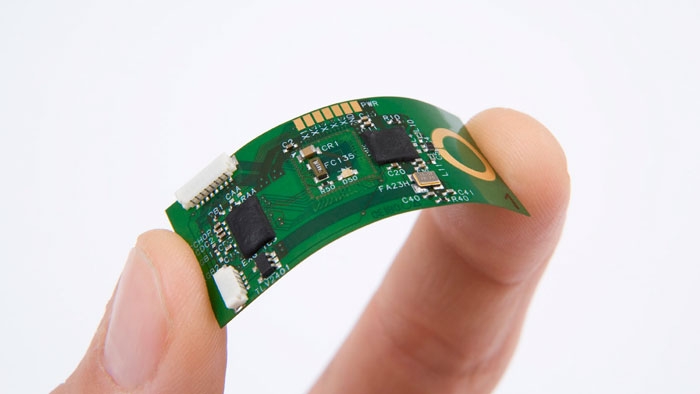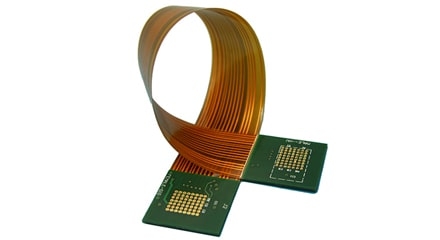Bendable circuit boards, commonly known as Flexible Printed Circuit Boards (Flexible PCBs), are revolutionizing the field of electronics. These circuit boards are designed to bend and flex during use, making them indispensable in modern precision equipment and everyday devices. Their adaptability allows for innovative designs in compact and dynamic electronic products. Over the years, the technology behind Flexible PCBs has evolved significantly, enhancing their efficiency and application range. BEST FPC, a leader in Asia's Flexible Circuits market, leverages its 18 years of experience in designing and producing specialized Flexible Circuits. The company maintains robust partnerships with 12 stable raw material suppliers and boasts a dedicated design team of 10 professionals. With capabilities for quick proofing within one week and a 3,000-square-meter production facility, BEST FPC is equipped to handle both small batches and mass production, ensuring top-tier service for global customers.

Fundamentals of Bendable Circuit Boards
Definition and Composition
Bendable circuit boards, or flexible printed circuit boards (Flexible PCBs), comprise a pliable base material with electronic components mounted on it. Their ability to bend and flex makes them perfectly suited for contemporary electronic applications where space optimization and design flexibility are paramount.
Advantages Over Traditional Circuit Boards
Flexible PCBs boast numerous advantages over their rigid counterparts. They are lighter, can adapt to unique shapes, and enhance device reliability by minimizing connectors and interconnections. Their inherent flexibility also provides superior resistance to vibrations and mechanical stresses.
Types of Flexible Substrates
Flexible substrates are primarily available in three types: polyimide (PI), polyester (PET), and polyethylene naphthalate (PEN). Each offers varying degrees of flexibility, cost efficiency, and thermal stability, catering to diverse applications across different sectors.
Materials and Manufacturing Processes
The production of flexible PCBs involves various materials, such as conductive copper foil, dielectric substrates, and adhesives. The manufacturing process includes etching the copper to create traces, applying a protective coverlay, and assembling the electronic components onto the board.
Design Considerations
Mechanical Flexibility vs. Electrical Performance
The design of flexible PCBs demands a delicate balance between mechanical flexibility and electrical performance. Engineers must consider factors like the bend radius and the durability of the board under repeated flexing to ensure it does not compromise electrical integrity.
Thermal Management
Due to their compact and flexible nature, these PCBs require innovative approaches to thermal management. Employing thermal vias and thermally conductive adhesives are common strategies to effectively manage heat dissipation.
Reliability and Durability
The durability and reliability of flexible PCBs depend heavily on the materials chosen and the environmental conditions they face. It's crucial for designers to ensure these boards can withstand extreme temperatures, exposure to chemicals, and physical stresses throughout their lifespan.
Integration with Components
The integration of components on flexible PCBs requires strategic planning to prevent damage during flexion. Techniques like using flexible interconnects and adding stiffeners strategically are essential to maintain both functionality and structural integrity.

Current Trends and Innovations
Emerging Technologies in Flexible Electronics
Recent advancements in material science and manufacturing processes have introduced stretchable electronics, which expand upon traditional flexibility to include elasticity. Ongoing innovations in conductive inks and substrate technologies are expanding the possibilities within the field of flexible electronics.
Applications Across Industries
Flexible PCBs are gaining traction in numerous industries, including consumer electronics, automotive, medical, and aerospace, thanks to their versatility in conforming to various shapes and sizes. This makes them particularly valuable in wearable tech and compact medical devices.
Case Studies of Successful Implementations
Noteworthy implementations of flexible PCBs include their use in modern smartphones, where they facilitate the connection of complex components within constrained spaces, boosting both functionality and dependability. In healthcare, flexible PCBs are pivotal in the development of wearable health monitors that track vital signs while comfortably conforming to the human body.
Challenges and Limitations
Material Constraints
The materials used in flexible PCBs face specific constraints, particularly in terms of durability and environmental sensitivity. Materials must be carefully selected to balance flexibility with the ability to withstand mechanical stress and environmental factors such as heat and chemicals.
Manufacturing Complexity
Producing flexible PCBs involves complex manufacturing processes that can be difficult to scale efficiently. The precision required in etching flexible circuits and assembling components on a bendable substrate adds layers of complexity compared to traditional rigid PCBs.
Standardization and Compatibility
The lack of standardization in flexible PCB designs poses significant challenges. Each application may require a custom design, complicating the integration of these boards into standardized electronic products and systems, thereby affecting compatibility and interchangeability.
Cost Implications
Due to the specialized materials and advanced manufacturing processes required, flexible PCBs are often more expensive to produce than their rigid counterparts. This cost factor can be a significant barrier to broader adoption, particularly in cost-sensitive applications.
Future Directions
Novel Materials and Manufacturing Techniques
The future of flexible PCBs lies in the development of novel materials and manufacturing techniques that can enhance performance and reduce costs. Innovations such as conductive polymers and nano-materials, along with more efficient production methods, are expected to drive significant advancements.
Advancements in Flexible Circuit Design
As technology evolves, so too will the design methodologies for flexible PCBs. Future advancements may include more sophisticated software tools and algorithms that optimize design for functionality and durability while maintaining the necessary flexibility.
Potential Applications in Wearable and Biomedical Devices
Flexible PCBs have vast potential in wearable technology and biomedical devices. Future applications could include more advanced wearable computers, smart textiles, and highly flexible devices that can interface directly with the human body, such as sensors that monitor health indicators at the molecular level.
Sustainability Considerations
Sustainability will become increasingly important in the design and manufacturing of flexible PCBs. Efforts will focus on developing eco-friendly materials and processes that minimize environmental impact and promote the recyclability of used components and materials.
CONCLUSION
The future of bendable circuit boards is poised for transformative growth, driven by continuous advancements in materials, design, and manufacturing processes. As these flexible PCBs become integral to cutting-edge applications in wearable and biomedical devices, the industry faces the challenge of overcoming material constraints, manufacturing complexities, and cost barriers. Innovations in eco-friendly production methods and standardization will be crucial in making flexible PCBs more accessible and sustainable. Embracing these changes will not only enhance the functionality and reliability of electronic devices but also open new horizons for their application, marking a significant leap forward in the electronics industry.










 2024-05-17
2024-05-17
 BEST
BEST

.png)
.png)
.png)
.png)

.png)

